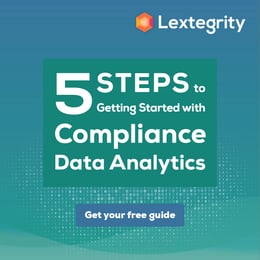
Data analytics and automation provides a significant opportunity to modernize the mechanisms used to identify compliance risks within businesses, particularly in areas such as fraud, corruption, sanctions and conflicts of interest. By utilizing the data that is already being collected, it's possible to anticipate areas of risk, and identify, in granular detail, insights relating to wrongdoing.
But where should you begin? What are the key steps to follow? And how do you go from data overload to data clarity in order to advance your program effectiveness?
This piece answers all of those questions, and more, including:
 Why you should take a data-driven approach
Why you should take a data-driven approach Defining your starting point and vision
Defining your starting point and vision How to visualize your data and understand it
How to visualize your data and understand itTo get your copy of the guide, simply fill out the form.
© 2023 Lextegrity Inc. All Rights Reserved. Privacy Policy